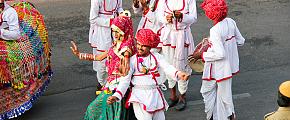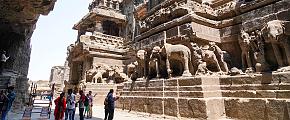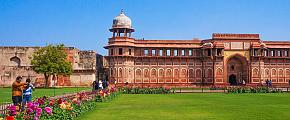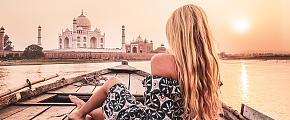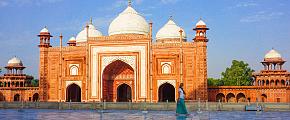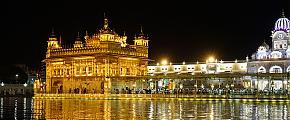Jaipur Travel Guide
As the capital and largest city of Rajasthan, Jaipur has been one of the most popular tourist destinations in India. Entitled the "Pink City of India" by UNESCO, the city is famed for the main color of the buildings in the city.
Jaipur was built by Sawai Jai Singh in the 18th century, with magnificent palaces, unbeatable forts, and historical sites. The city is part of the famed tourist golden triangle with Delhi and Agra. It has many fantastic scenic spots, such as Amber Fort, City palace museum, Nahargarh Fort, which attract tourists from home and abroad all year round.
Amber Fort
Located on the outskirts of Jaipur, the capital of Rajasthan, Amber Fort was once the capital of the princely Jaipur state and the fort's residence of its Rajput rulers. It was listed on the list of UNESCO World Heritage Sites in 2013.
There are quite a few forts in Rajasthan, but Amber Fort is a must-visit for all tourists, due to its profound history, architecture, artistic skills, and amazing scenery.
Located on a hill, this magnificent palace is made of red sandstone and marble. It is divided into four floors, each with a courtyard.
You can either walk or take a jeep to reach the top. No matter what choice you make, you can enjoy Amber Castle magnificently built against the mountain. When you forge ahead along the winding hillside, you will be shocked by the grand, solemn, and glorious ancient palace in front of you.
During the awesome 2-3hours visit, you can get a full view of the Lion Gate of the palace, stunning marble carving techniques, exquisite windows, unique Indian courtyards, as well as rooms displaying the life scenes of kings and nobles in the past.
But I guess the best part is sheesh mahal. Countless small mirrors on the palace wall are fabulous shining in the sun. These all well explained why Amber Castle is famous worldwide for its artistic elements. It is really hard to imagine how much manpower and resources have been required to complete such a huge complex.
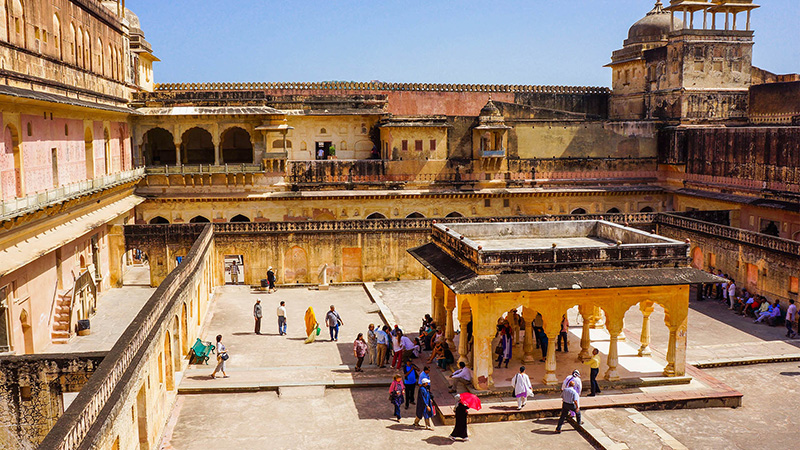 Amber Fort
Amber Fort
Nahargarh Fort
Nahargarh Fort, also known as Tiger Fort, was built in 1734 and expanded in 1868. It stands on the mountain on the northern outskirts of Jaipur, commanding a fine view of the gorgeous pink city. Roughly 35 minutes from the city center, you could reach easily by cab or rickshaw.
Due to the unbreakable military defense and the biggest ever cannon in the world as recorded in history, Jaipur successfully resisted the attacks of foreign invaders and was regarded as an unbeatable city.
The most spectacular part of Nahargarh Fort is Madhavendra Palace which was the royal family's main palace. The two-storeyed palace is divided into nine similar apartment rooms, each of which is a duplex, with a lobby, bedroom, washroom, storage room, and kitchen, all designed according to the needs of the royal family. The palace is a perfect combination of Indian and European architectural designs. without too many fabulous decorations, the architecture shows delicate carvings as well as artistic stonework, which are all maintained well.
Meanwhile, within the fort complex are two main temples, one worships Singh Bhomia and the other is dedicated to the ruler of Jaipur.
Besides the amazing architecture and glorious history, sunset and evening views are two visual treats that have brought tourists to Nahargarh Fort. It has been the shooting sight for quite a few Bollywood movies. No matter you are a shutterbug or not, Nahargarh Fort is something you can't miss. What's more, a dinner in an open-air restaurant within the fort will be excellent. You can enjoy the spectacular view of the pink city when the lights are on.
City Palace Museum
Built in 1728, the City Palace Museum was a palace built by Rajasthan after the state surrendered to the Mughal Empire. However, descendants of Maharaja royal family still live here. Currently some parts work as a museum, which is open to the public.
Located in the center of Jaipur's old city, the City Palace Museum is one of the best-preserved relics in India.
The palace is composed of several palaces, with luxurious buildings. The true grandeur of the palace is worthy of being appreciated. You will be impressed by the fabulous architecture as well as the decoration of white marble sculptures. The palace museum is not only a relic but also a lifelike museum, collecting clothes, carpets, weapons, works of art, etc. left by princes and nobles. The City Palace Museum is divided into several exhibition halls, which are of high historical and artistic value.
The whole palace covers almost 1/4 of the old city streets with its magnificent buildings, where you can deeply observe the luxurious life as well as the ups and downs of Maharaja royal family. There is also a Palace Cafe in the elegant garden. I guess enjoying a cup of coffee in the Indian royal garden is quite an experience.
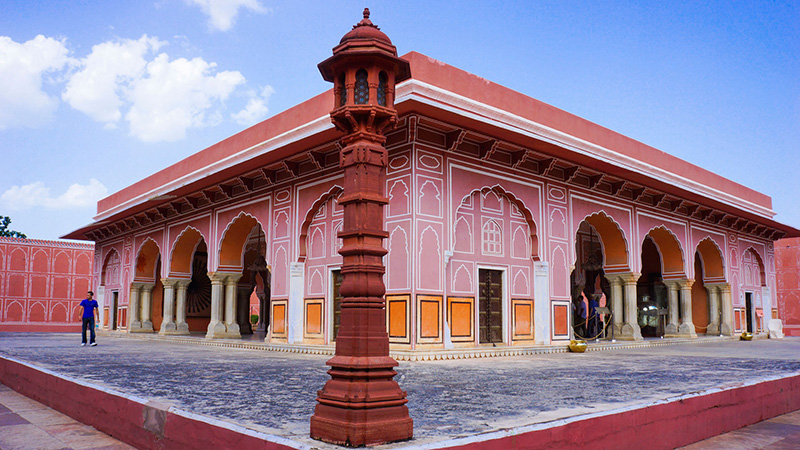 City Palace Museum
City Palace Museum
Jantar Mantar
As the most important, comprehensive, and well-preserved ancient observatory in India as well as a world heritage site, Jantar Mantar was built between 1728 and 1734 by Sawai Jai Singh II, the founder of Jaipur, Rajasthan, as we as a math enthusiast.
At first glance, Jantar Mantar seems to be nothing but a pile of sculptures. But it is a collection of astronomical instruments, with which Astronomical positions can be observed with the naked eye.
Jantar Mantar means "calculating machine" and is defined to be the perfect proof of the integration of cosmic observation, society, and faith.
This astronomical observatory can make accurate calculations on stars, zodiac signs, the sun as well as the location of the Pole star. It proves to be the best instrument to calculate the correct time accurately within two seconds.
It will be perfect if your trip happens on a sunny day as bright sunlight is quite necessary to use all the instruments. A guided tour is advisable as the guide will accurately explain how each instrument will be used.
Hawa Mahal
As a landmark in Jaipur, Hawa Mahal built from red and pink sandstone in 1799, is located on the main road of Jaipur.
Originally Hawa Mahal was a part of the city palace. The unique five-story building looks like a huge pink "wall", which is densely covered with 953 honeycomb windows, hollowed out with red sandstone.
The design intends to allow the royal ladies by then who had to abide by the strict "purdah" rule, to be able to watch the daily life, the local market as well as festival activities on the street without being seen by the public.
This structure also allows wind to blow into any part of the palace, which makes summer visit a cool thing. During windy days, the wind will blow through the front and rear windows without blowing down the building as long as the windows keep being opened, so it is named the "Palace of Wind".
Hawa Mahal itself is a five-storeyed crown structure, which was designed for some specific purpose. The foundation of the architecture is similar to a half-octagon, with a watchtower on both sides. The floors are connected by ramps. Entering from the narrow corridor to the interior, you will be surprised at the simple structure of the interior. very few fancy decorations were shown here.
Every morning when the sun rises, the palace in the golden light is particularly spectacular, and it has a unique charm under the bright moon at night as well. So, the best time to visit is early morning and late afternoon when the sunshine passes through countless holes with golden light and exquisite beauty.
Since the beautiful architectural masterpiece is sitting by a busy street with lots of crowds and traffic, to get a decent view easily is to go across the street and find a cafe where you can go to the rooftop or stay as long as you like.
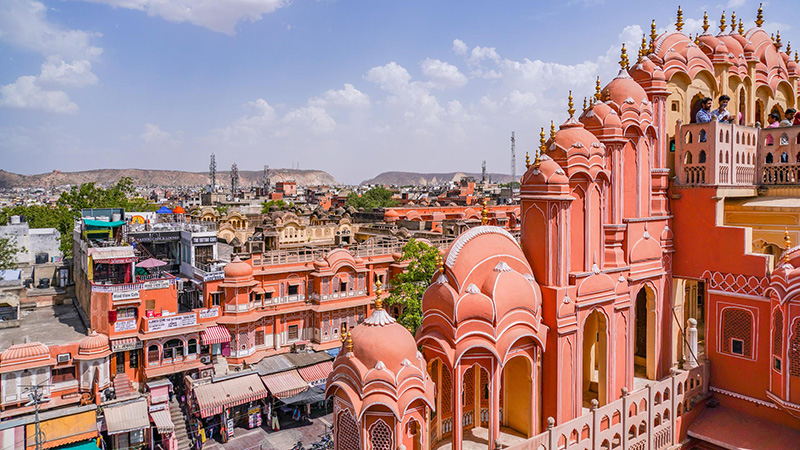 Hawa Mahal
Hawa Mahal
Critical Tips Create A Perfect Trip
Traveling in Jaipur, the paradise for gourmets, without trying Dal Bati Churma, Missi Roti, Bajre ki Roti, Mirchi Bada, as well as the famous chaat, the trip to Jaipur won't be complete. Meanwhile, the desserts here are very popular and unique. Ghevar, Imarti, Halwa, Choorma, Gajak, and Moong Thal are strongly recommended.
No matter whether in hotels or restaurants do drink bottled water only. One of the common experiences of traveling to India is that sometimes the tap water may make you sick. So, it would be great if drugs to treat diarrhea are brought along.
When first arrive in India, you may not adapt to busy and congested streets, these streets are covered with Cattle, motorcycles, and rickshaws, but there are no sidewalks on many streets in India. So, be careful when crossing the street.
Outside most of the sightseeing places, many excited hawkers are selling small goods outside. Don't be afraid to say no, unless you want it. Otherwise, they will make your walking busy by following you all the way.
Although India is not the easiest place to visit, you will be stunned by its unique custom, amazing sights, and profound history as long as you are well-prepared for such culture shock.

